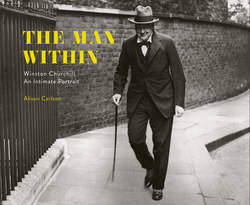Читать книгу The Man Within - Alison Carlson - Страница 12
На сайте Литреса книга снята с продажи.
ОглавлениеIntroduction by Phil Reed, OBE
There have been more books written about Winston
Churchill than almost anyone else in history, and each
year sees a new crop appear, many repeating or recycling
the contents of others, adding nothing new to our
understanding of the man. Specialist texts aplenty analyse
his political career and philosophy, his writings, his travels,
his relationships (personal and political) and his strategic
skills; the density of the texts, however, ranges from
journalistic to recondite academic. Books of cartoons of
him, of his paintings, and of his habits and tastes tend to
be more approachable, though they convey only a bare
sliver of who he was. And while books of his bons mots,
quotations and extracts from his writings are legion, too
many contain misquotations and use a thin selection of
quotations to offer quick amusement (and earn a fast buck).
There is also no shortage of books of photographs of him,
charting his life and career. From his school days onwards,
Churchill courted the camera – so much so that most of the
images so familiar to us are ones that he purposely allowed
or encouraged. His view that “history will be my judge and
I will write the history” applied as much to images as to
text, and the photographs we have of him in our minds are
largely those that he wanted us to have: the stern, bullish
leader of the famous Karsh portrait; the fatherly figure of
the wartime posters; and the clown twirling his hat on his
stick. These images have been widely used – and abused – to
peddle a position or brand goods and services that have
no relationship to him and his life. They each illustrate
different aspects of his character and style and, these many
years later, their familiarity both colours and constrains our
views of the man.
Photography allows us to make judgments about a person
that prose does not; the latter dictates to us a particular
view, whereas the photograph allows us to speculate
about the character, even the thoughts, of the subject as
implied by the details of the image. But we have been
subjected to the same images of Churchill over and over
for decades; gaining new insights from images that have
become quotidian, even passé, is ever more difficult. The
Man Within offers less-known images, often ones that
were not quite so engineered by Churchill himself. When
matched with the more well-known images, they provide
a much broader picture of the man. When that range of
images is paired with a robust selection of quotations – from
pithy, situational one-liners to pondering reflections on
humanity – we glimpse not just the titanic figure but the
human being.
